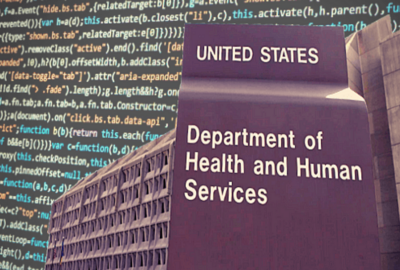NARA’s new IT governance structure merges strange bedfellows
Swarnali Haldar, the chief information officer for NARA, said her goal is to simplify how and who makes the decisions around IT programs.
wfedstaff | April 18, 2015 2:41 am
At the National Archives and Records Administration, business will no longer wait for IT and IT will not be held up by the business side.
It’s all about a new kind of integration between the two sometimes competing and, at the very least, dependent organizations.
Swarnali Haldar, the chief information officer for NARA, said her goal is to simplify how and who makes the decisions around IT programs.
“We will make it very clear at each gate review that we will partner with our folks to develop the right level of requirements. At the design gate review, yes we will still have the chief technology officer leading that design review, but by that time his systems engineers will have partnered with our business folks and the supporting vendors to develop the design that aligns to our enterprise architecture,” Haldar said. “So we will be a lot more proactive than we have in the past which I hope gives our business community a better feel for when they have an IT need, they are ensured they will get that need met in the right way and follow the right governance.”
In many ways, Haldar’s approach is combining the old with the new. She is updating NARA’s enterprise architecture — a roadmap to modernize an organization’s technology infrastructure by understanding the current state of affairs, creating standards and developing a plan to modernize.
At the same time, Haldar is joining a growing trend among CIO offices where they are changing their organization to be more customer-service focused.
“We are revisiting our EA framework in the sense that, yes we have an existing plan and framework, but where does that need to be to serve both today’s needs as well as our ongoing access needs in the future,” she said. “We are aligning it to more of an open architecture framework and bring in tools and services that we can easily do in a modularized fashion and that actually is very telling in our next generation Electronic Record Archives system as well. So we are trying to align our EA where it’s not so stringent and it’s got more of an open framework where we are flexible and scalable to the future needs.”
Part of that flexibility of the EA is to help NARA’s CIO office be more customer focused.
Customer liaisons for mission areas
Haldar said the governance process is one way do to that by being more agile and resource focused. At the same time, she’s also changing her IT organization to be business liaisons.
“I’m going to have a group of program managers that are focused on the business needs and programs that we manage in IT. We will have a customer service liaison that makes sure that we are delivering things and measure the satisfaction level of our customers,” she said. “Unlike 10 years ago, IT needs a huge customer service focus that will help us enable our business folks to get the tools they need.”
Haldar said the vision for the reorganization has been created on paper, and now she’s will work with the human capital office to put this change in place over the next nine months.
The customer-focused reorganization and the updated EA will have a huge impact on NARA’s major programs, starting with the Electronic Records Archive.
This 10-year-old program to ensure electronic records always are accessible no matter the format they were first created in has had its share of fits and starts. NARA hired IBM in 2011 under a 10- year, $240 million contract to support the ERA architecture and make small improvements.
Filling the skill gaps
Haldar said ERA remains part of NARA’s larger plan to use the cloud for records management. The current ERA system takes in more than one terabyte of data a month.
“We are developing the next generation of the online public access catalog in the cloud,” she said. “The amount of data that has to be effectively transferred to NARA for long-term preservation and permanent public access is still overwhelming. We are looking to deliver the next generation ERA, taking into considering the storage and scalability needs for access in the future. The cloud is a huge part of our future, and we are partnering with our acquisition folks to make sure we have a scalable and agile process not just to procure, but to consume cloud services versus on premises.”
Haldar said the next generation of ERA will be developed through an agile approach. She said the goal is to make it smoother, faster and easier to use with a goal of making the data accessible to the public.
“Both NARA’s business community and my organization are looking at forming a focus group to start looking at [preservation and accessibility] issues,” she said. “We have started to form a dedicated IT working group to start considering the access needs for the ongoing future, the storage needs that has to be scalable. The storage needs for NARA doesn’t stop at permanent records. It’s anything, temporary records and records come in many different flavors. NARA and IT are starting to put a lot of focus on how we will get our arms around that going forward.”
Haldar added she’s also looking at her employee skills and is hiring those who can help implement that long-term records management vision.
The training and development of NARA’s IT workforce is a third priority along with organizational structure and records management.
“Training is always a thing I want to make folks get, is budgeted for and happens,” Haldar said. “The culture of NARA’s mission is so greatly changing from getting those parchment paper records and preserving and making them available to born digital or digitized records, and we need to make sure that our folks that make access available to those types of records are equipped with the right expertise, the background and the knowledge they need to manage whether it’s a project they are managing themselves or delivering with a group of contractors.”
RELATED STORIES:
NARA hires IBM to move records system into next phase
NARA tackling records management in the cloud
New roadmap envisions electronic record keeping by 2020
Copyright © 2024 Federal News Network. All rights reserved. This website is not intended for users located within the European Economic Area.
Jason Miller is executive editor of Federal News Network and directs news coverage on the people, policy and programs of the federal government.
Follow @jmillerWFED







